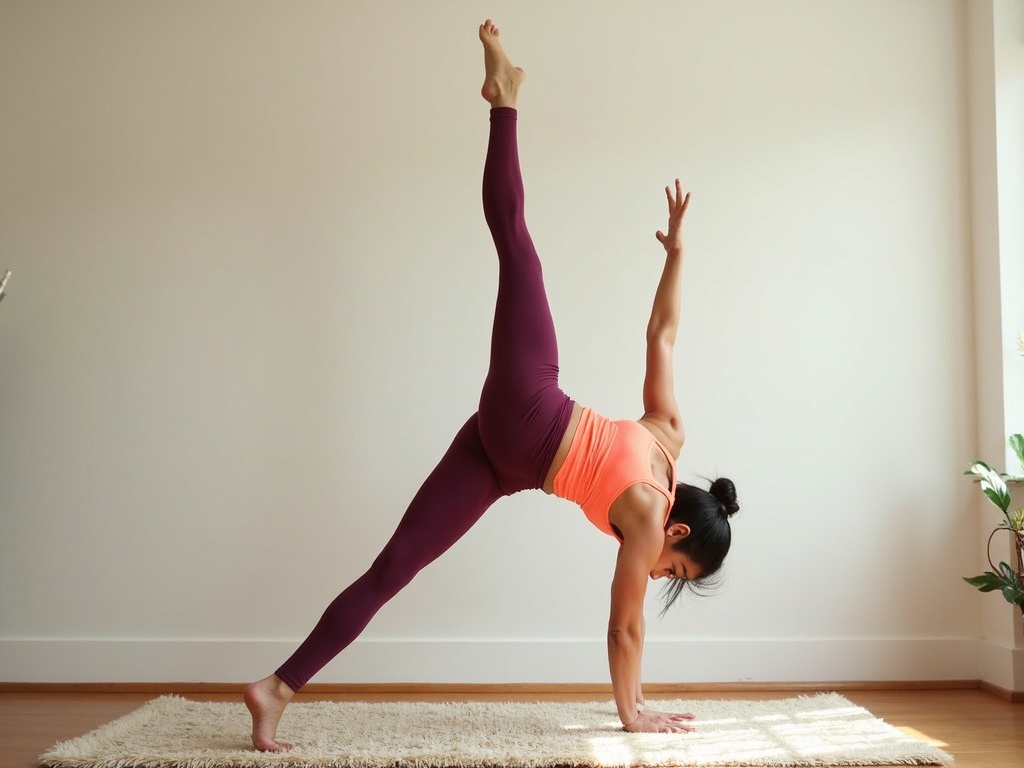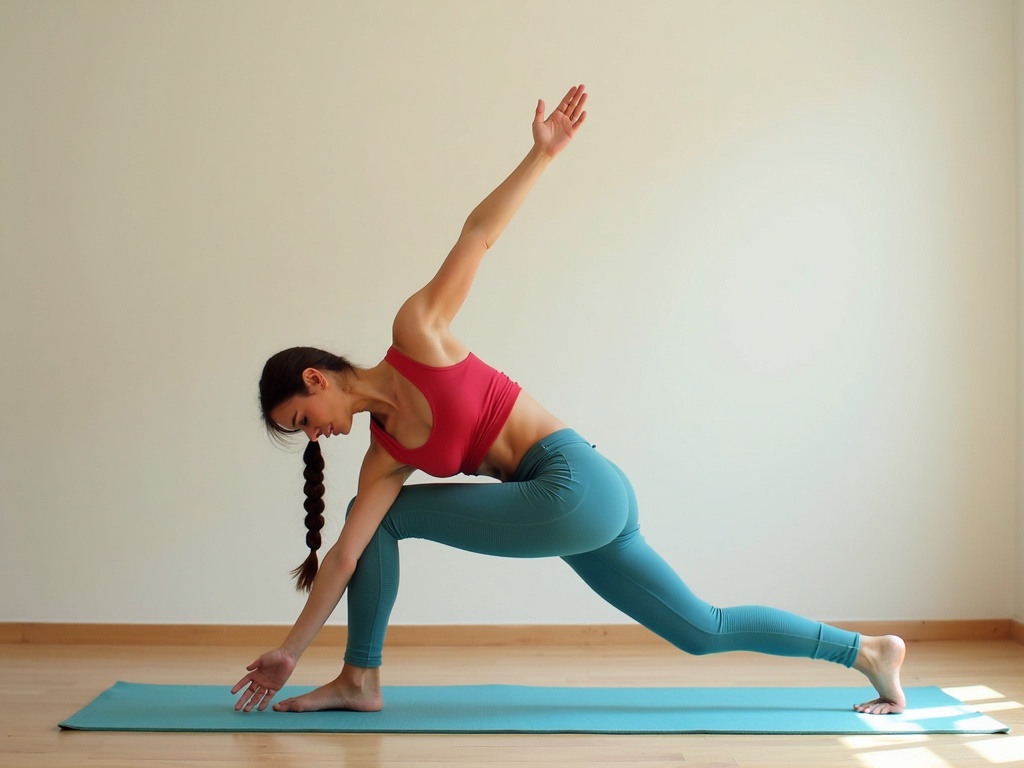Unlock Your Inner Acrobat: A Full Body Flexibility Workout at Home
Imagine moving with the effortless grace of a dancer, touching your toes without a second thought, and feeling your body respond with ease to any activity. This isn't just for athletes or yogis; it's within reach for anyone willing to dedicate a little time to improving their flexibility. And the best part? You can achieve remarkable results with a full body flexibility workout you can do right at home. No expensive gym memberships or specialized equipment needed – just you, your body, and a commitment to feeling better.
Why Flexibility Matters: More Than Just Touching Your Toes
Flexibility, often overlooked, is a cornerstone of overall health and well-being. It's not just about performing impressive stretches; it's about improving your quality of life. Here's why incorporating a full body flexibility workout into your routine is crucial:
**Reduced Risk of Injury:Flexible muscles are less prone to strains and tears. Think of a rubber band – a new, supple one stretches easily, while an old, brittle one snaps. Stretching prepares your muscles for activity, increasing their range of motion and resilience.
**Improved Posture and Balance:Tight muscles can pull your body out of alignment, leading to poor posture, back pain, and balance issues. Flexibility exercises help lengthen and relax these muscles, restoring proper alignment and improving your stability.
**Increased Range of Motion:Flexibility directly translates to a greater range of motion in your joints. This makes everyday tasks easier, from reaching for items on a high shelf to bending down to tie your shoes.
**Pain Relief:Tight muscles can contribute to chronic pain conditions. Stretching can help alleviate muscle tension, reduce inflammation, and improve blood flow, providing natural pain relief.
**Enhanced Athletic Performance:Whether you're a seasoned athlete or a weekend warrior, flexibility is essential for optimal performance. It allows you to move more efficiently, generate more power, and reduce your risk of injury.
**Stress Reduction:Stretching has a calming effect on the nervous system. It can help release physical tension, reduce stress hormones, and promote relaxation.
**Improved Circulation:Stretching increases blood flow to your muscles, delivering vital nutrients and oxygen. This can help improve energy levels and reduce muscle fatigue.
Creating Your Home Flexibility Sanctuary
Before diving into the workout, let's set the stage for success. You don't need a fancy studio – just a comfortable and inviting space where you can move freely.
**Choose a Quiet Space:Find a room in your house where you can minimize distractions and focus on your body.
**Prepare Your Mat (or a Soft Surface):A yoga mat or a soft rug will provide cushioning and support for your joints.
**Comfortable Clothing:Wear clothes that allow you to move freely and comfortably without restriction.
**Hydration is Key:Keep a water bottle nearby to stay hydrated throughout your workout.
**Set the Mood:Consider dimming the lights, playing calming music, or using aromatherapy to create a relaxing atmosphere.
**Listen to Your Body:This is the most important rule! Never push yourself beyond your limits. Flexibility is a journey, not a race.
The Ultimate Full Body Flexibility Workout at Home: A Step-by-Step Guide
This workout is designed to target all major muscle groups, improving your overall flexibility and range of motion. Remember to listen to your body and modify or skip any exercises that cause pain. Aim to hold each stretch for 30 seconds, breathing deeply throughout.
- Warm-Up (5 minutes): Start with light cardio, such as jogging in place, jumping jacks, or arm circles, to increase blood flow to your muscles. Follow with dynamic stretches like arm swings, leg swings, and torso twists.
- Neck Stretches (2 minutes):
- Neck Tilts: Gently tilt your head to the right, bringing your ear towards your shoulder. Hold, then repeat on the left side.
- Neck Rotations: Slowly rotate your chin towards your chest, then gently turn your head to the right, looking over your shoulder. Hold, then repeat on the left side.
- Shoulder Stretches (3 minutes):
- Cross-Body Shoulder Stretch: Bring one arm across your body and use your other arm to gently pull it closer. Hold, then repeat on the other side.
- Overhead Triceps Stretch: Reach one arm overhead and bend it at the elbow, reaching down towards your upper back. Use your other hand to gently pull your elbow further down. Hold, then repeat on the other side.
- Chest Stretch (2 minutes):
- Doorway Chest Stretch: Place your forearms on a doorway frame, slightly wider than shoulder-width apart. Lean forward until you feel a stretch in your chest.
- Back Stretches (5 minutes):
- Cat-Cow Stretch: Start on your hands and knees. Inhale and arch your back, dropping your belly towards the floor (cow pose). Exhale and round your spine towards the ceiling, tucking your chin to your chest (cat pose). Repeat.
- Child's Pose: Kneel on the floor with your knees hip-width apart. Sit back on your heels and then fold forward, resting your forehead on the floor. Extend your arms forward or rest them alongside your body.
- Hip Stretches (5 minutes):
- Butterfly Stretch: Sit on the floor with your knees bent and the soles of your feet together. Gently press your knees towards the floor.
- Pigeon Pose: Start on your hands and knees. Bring one knee forward towards your wrist, angling your shin towards the opposite hand. Extend your other leg straight back behind you. Gently lower your hips towards the floor. If this is too intense, you can modify by lying on your back and pulling one knee towards your chest. Hold, then repeat on the other side.
- Hamstring Stretches (5 minutes):
- Seated Hamstring Stretch: Sit on the floor with your legs extended in front of you. Reach forward towards your toes, keeping your back as straight as possible.
- Standing Hamstring Stretch: Stand with your feet hip-width apart. Bend forward from your hips, keeping your back straight. Reach towards your toes or the floor.
- Quadriceps Stretches (3 minutes):
- Standing Quadriceps Stretch: Stand and bend one knee, bringing your heel towards your glutes. Grab your ankle with your hand and gently pull your heel closer to your glutes. Keep your thighs aligned and your core engaged. Hold, then repeat on the other side.
- Calf Stretches (2 minutes):
- Wall Calf Stretch: Stand facing a wall and place your hands on the wall for support. Step one foot back, keeping your heel on the ground and your leg straight. Lean forward until you feel a stretch in your calf. Hold, then repeat on the other side.
- Cool-Down (5 minutes): End with gentle stretches and deep breathing to allow your body to relax and recover. Focus on holding each stretch for a longer duration.
Modifications and Progressions: Tailoring the Workout to Your Needs
The beauty of a home flexibility workout is its adaptability. You can modify exercises to suit your current fitness level and gradually progress as you become more flexible.
**Beginner:If you're new to flexibility training, start with gentle stretches and hold them for shorter durations (e.g., 15-20 seconds). Focus on proper form and avoid pushing yourself too hard.
**Intermediate:As you become more flexible, you can increase the intensity of the stretches and hold them for longer durations (e.g., 30-45 seconds). You can also add more challenging variations of the exercises.
**Advanced:If you're already quite flexible, you can incorporate advanced stretching techniques like PNF (Proprioceptive Neuromuscular Facilitation) stretching, which involves contracting and relaxing the muscles to increase range of motion.
**Listen to Your Body!**
This cannot be stressed enough. Flexibility varies from person to person, and even from day to day. Pay attention to your body's signals and adjust your workout accordingly. Don't compare yourself to others – focus on your own progress and celebrate your achievements.
Consistency is Key: Making Flexibility a Habit
The most effective flexibility workout is the one you actually do consistently. Aim for at least 3-4 sessions per week to see noticeable improvements in your flexibility and overall well-being. Even 15-20 minutes of stretching a few times a week can make a significant difference.
**Schedule Your Workouts:Treat your flexibility workouts like any other important appointment. Block out time in your calendar and stick to it.
**Make it Enjoyable:Choose a time of day when you feel relaxed and motivated. Listen to your favorite music, light some candles, or practice in a beautiful natural setting.
**Find a Partner:Working out with a friend or family member can help you stay motivated and accountable.
**Track Your Progress:Keep a record of your workouts and note any improvements in your flexibility. This can help you stay inspired and see how far you've come.
**Be Patient:Flexibility takes time and consistent effort. Don't get discouraged if you don't see results immediately. Just keep showing up and putting in the work, and you'll eventually reach your goals.
Beyond the Workout: Integrating Flexibility into Daily Life
Flexibility isn't just something you do during a dedicated workout; it's a quality that can be cultivated throughout your day. Incorporating small stretches and movements into your daily routine can help you maintain your flexibility and prevent stiffness.
**Stretch at Your Desk:Take short breaks throughout the day to stretch your neck, shoulders, and back.
**Walk with Good Posture:Pay attention to your posture while walking and standing. Keep your shoulders back, your core engaged, and your head up.
**Use Proper Lifting Techniques:When lifting heavy objects, bend your knees and keep your back straight to avoid straining your muscles.
**Take the Stairs:Opt for the stairs instead of the elevator whenever possible to engage your leg muscles and improve your cardiovascular health.
**Practice Mindful Movement:Be aware of your body's movements throughout the day and try to move with grace and fluidity.
The Road to a More Flexible You
A full body flexibility workout at home is an investment in your long-term health and well-being. By dedicating just a few minutes each day to stretching and improving your range of motion, you can unlock a world of benefits, from reduced pain and injury risk to improved posture and athletic performance. So, roll out your mat, put on some relaxing music, and embark on your journey to a more flexible, healthier, and happier you. The grace, ease, and freedom of movement you'll gain is well worth the effort.


